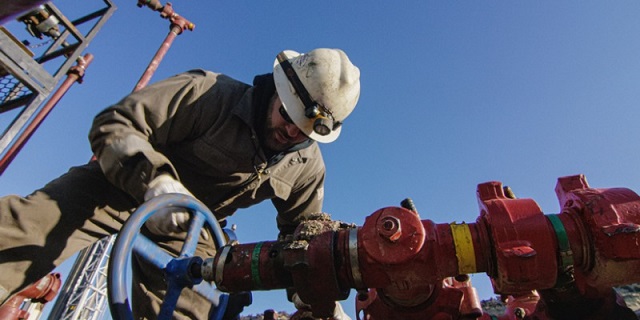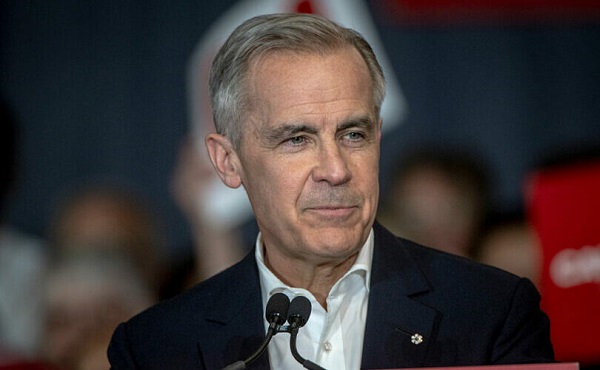Alberta
Alberta reaching out to Canadians to help kill Ottawa’s job-killing cap on energy production

Scrap the Cap |
S&P Global Commodity Insights found that a 40 per cent emissions cap could lead to a reduction in oil and natural gas production of one million barrels per day by 2030 and a 2.1-million barrel reduction by 2035.
Independent analysis by the Conference Board of Canada, Deloitte and S&P Global tell the same story: the federal government’s proposed cap would require oil and gas production cuts that would put people out of work and drain billions from Canada’s economy. Despite these reports and continued opposition from many provinces, industry, businesses, experts and Canadians, the federal government will soon release its draft regulations.
The proposed emissions cap is a production cap. S&P Global Commodity Insights found that a 40 per cent emissions cap could lead to a reduction in oil and natural gas production of one million barrels per day by 2030 and a 2.1-million barrel reduction by 2035. According to the Conference Board of Canada and Deloitte, the cap could amount to a more than 10 per cent reduction in oil production and a 16 per cent reduction in conventional gas production in Alberta in 2030.
Alberta’s government is launching a national advertising campaign to inform Canadians that this cap will lead our province and country into economic and societal decline. Alberta would be hit hardest and in 2040, the province’s GDP would shrink by 4.5 per cent. Canada’s would decline by 1 per cent. The cap would result in 150,000 Canadians losing their jobs and the loss of $14 billion a year from the economy. The average Canadian family would be left with up to $419 less per month to spend on groceries, housing or fuel, impacting the quality of life Canadians enjoy coast to coast to coast.
All Canadians deserve to know the dangers of this cap, which will negatively impact their families without reducing global emissions whatsoever.
“Once again, Ottawa is attempting to set policies that are shortsighted and reckless. We’re challenging proposed policy that would stifle our energy industry, kill jobs and ruin economies by launching a national campaign that tells Ottawa to “Scrap the Cap.” We’re telling the federal government to forget this reckless and extreme idea and get behind Alberta’s leadership by investing in real solutions that cut emissions, not Canada’s prosperity.”
The proposed cap will put safe, reliable and secure energy at risk while costing tens of thousands of jobs and billions in lost federal revenue that pays for important programs, services and infrastructure. This means lost jobs, hurt families shuttered businesses and less revenue going to the schools, hospitals, programs and services every Canadian relies on.
If left unchanged, this cap would force Canada’s energy industry to curtail production at the expense of struggling Canadian families. When production is cut, jobs, tax revenues and the economy are cut too. It is, in effect, a cap on prosperity that would be felt across the country.
Alberta is encouraging Canadians to visit the Scrap the Cap website and tell Ottawa they cannot and will not support a cap on energy production that leaves Canadians with a lower standard of living and reduced services. Print, television and social media advertisements will run nationwide from Oct. 15 to the end of November to urge Canadians to contact their member of parliament (MP) and share their thoughts. The Scrap the Cap website includes a letter that can be sent electronically.
“We will not stand by while the federal government threatens tens of thousands of jobs. This production cap means billions in revenues down the drain, and we will not let our province’s – or our country’s – economic future be gutted by an out-of-touch federal government. There is a way to reduce emissions without killing the economy… but this unconstitutional production cap is not it.”
“A cap on oil and gas production will kill jobs and investment and adds to the growing list of federal programs that will kill investments in decarbonization. All Canadians need to let Ottawa know how this cap hurts Alberta and risks Canada’s energy security.”
Alberta is reducing emissions through common sense, incentives and technologies, not taxes or punitive regulations. The oil sands emissions intensity per barrel has fallen 23 per cent since 2009 and is expected to decline another 28 per cent by 2035. Alberta’s overall emissions, electricity emissions and methane emissions are all declining, even as energy demand rises and the economy grows.
The province aspires to be carbon neutral by 2050 without cutting jobs or compromising affordable, reliable and secure energy for Albertans, Canadians and the world.
Related information
- Scrap the Cap website
- Proposed federal oil and gas emissions cap regulatory framework: Government of Alberta technical submission
- Deloitte: Potential Economic Impact of the Proposed Federal Oil and Gas Emissions Cap
- S&P Global Commodity Insights: Economic Impact Assessment of Canadian Conventional Oil and Gas
- Conference Board of Canada: Economic Impacts of a Greenhouse Gas Emissions Cap on the Oil and Gas Sector
- Alberta’s emissions reduction and energy development plan
Related news
- It’s time to scrap the cap: Joint statement (May 27, 2024)
Alberta
Alberta takes big step towards shorter wait times and higher quality health care

From the Fraser Institute
On Monday, the Smith government announced that beginning next year it will change the way it funds surgeries in Alberta. This is a big step towards unlocking the ability of Alberta’s health-care system to provide more, better and faster services for the same or possibly fewer dollars.
To understand the significance of this change, you must understand the consequences of the current (and outdated) approach.
Currently, the Alberta government pays a lump sum of money to hospitals each year. Consequently, hospitals perceive patients as a drain on their budgets. From the hospital’s perspective, there’s little financial incentive to serve more patients, operate more efficiently and provide superior quality services.
Consider what would happen if your local grocery store received a giant bag of money each year to feed people. The number of items would quickly decline to whatever was most convenient for the store to provide. (Have a favourite cereal? Too bad.) Store hours would become less convenient for customers, alongside a general decline in overall service. This type of grocery store, like an Alberta hospital, is actually financially better off (that is, it saves money) if you go elsewhere.
The Smith government plans to flip this entire system on its head, to the benefit of patients and taxpayers. Instead of handing out bags of money each year to providers, the new system—known as “activity-based funding”—will pay health-care providers for each patient they treat, based on the patient’s particular condition and important factors that may add complexity or cost to their care.
This turns patients from a drain on budgets into a source of additional revenue. The result, as has been demonstrated in other universal health-care systems worldwide, is more services delivered using existing health-care infrastructure, lower wait times, improved quality of care, improved access to medical technologies, and less waste.
In other words, Albertans will receive far better value from their health-care system, which is currently among the most expensive in the world. And relief can’t come soon enough—for example, last year in Alberta the median wait time for orthopedic surgeries including hip and knee replacements was 66.8 weeks.
The naysayers argue this approach will undermine the province’s universal system and hurt patients. But by allowing a spectrum of providers to compete for the delivery of quality care, Alberta will follow the lead of other more successful universal health-care systems in countries such as Australia, Germany, the Netherlands and Switzerland and create greater accountability for hospitals and other health-care providers. Taxpayers will get a much better picture of what they’re paying for and how much they pay.
Again, Alberta is not exploring an untested policy. Almost every other developed country with universal health care uses some form of “activity-based funding” for hospital and surgical care. And remember, we already spend more on health care than our counterparts in nearly all of these countries yet endure longer wait times and poorer access to services generally, in part because of how we pay for surgical care.
While the devil is always in the details, and while it’s still possible for the Alberta government to get this wrong, Monday’s announcement is a big step in the right direction. A funding model that puts patients first will get Albertans more of the high-quality health care they already pay for in a timelier fashion. And provide to other provinces an example of bold health-care reform.
Alberta
Alberta’s embrace of activity-based funding is great news for patients

 From the Montreal Economic Institute
From the Montreal Economic Institute
Alberta’s move to fund acute care services through activity-based funding follows best practices internationally, points out an MEI researcher following an announcement made by Premier Danielle Smith earlier today.
“For too long, the way hospitals were funded in Alberta incentivized treating fewer patients, contributing to our long wait times,” explains Krystle Wittevrongel, director of research at the MEI. “International experience has shown that, with the proper funding models in place, health systems become more efficient to the benefit of patients.”
Currently, Alberta’s hospitals are financed under a system called “global budgeting.” This involves allocating a pre-set amount of funding to pay for a specific number of services based on previous years’ budgets.
Under the government’s newly proposed funding system, hospitals receive a fixed payment for each treatment delivered.
An Economic Note published by the MEI last year showed that Quebec’s gradual adoption of activity-based funding led to higher productivity and lower costs in the province’s health system.
Notably, the province observed that the per-procedure cost of MRIs fell by four per cent as the number of procedures performed increased by 22 per cent.
In the radiology and oncology sector, it observed productivity increases of 26 per cent while procedure costs decreased by seven per cent.
“Being able to perform more surgeries, at lower costs, and within shorter timelines is exactly what Alberta’s patients need, and Premier Smith understands that,” continued Mrs. Wittevrongel. “Today’s announcement is a good first step, and we look forward to seeing a successful roll-out once appropriate funding levels per procedure are set.”
The governments expects to roll-out this new funding model for select procedures starting in 2026.
* * *
The MEI is an independent public policy think tank with offices in Montreal, Ottawa, and Calgary. Through its publications, media appearances, and advisory services to policymakers, the MEI stimulates public policy debate and reforms based on sound economics and entrepreneurship.
-

 Also Interesting23 hours ago
Also Interesting23 hours agoMortgage Mayhem: How Rising Interest Rates Are Squeezing Alberta Homeowners
-

 2025 Federal Election2 days ago
2025 Federal Election2 days agoMark Carney’s radical left-wing, globalist record proves he is Justin Trudeau 2.0
-

 2025 Federal Election1 day ago
2025 Federal Election1 day agoConservative Party urges investigation into Carney plan to spend $1 billion on heat pumps
-

 COVID-192 days ago
COVID-192 days agoMassive new study links COVID jabs to higher risk of myocarditis, stroke, artery disease
-

 Alberta2 days ago
Alberta2 days agoAlberta’s embrace of activity-based funding is great news for patients
-

 2025 Federal Election1 day ago
2025 Federal Election1 day agoCommunist China helped boost Mark Carney’s image on social media, election watchdog reports
-

 2025 Federal Election2 days ago
2025 Federal Election2 days agoDon’t double-down on net zero again
-

 2025 Federal Election1 day ago
2025 Federal Election1 day agoCorporate Media Isn’t Reporting on Foreign Interference—It’s Covering for It







